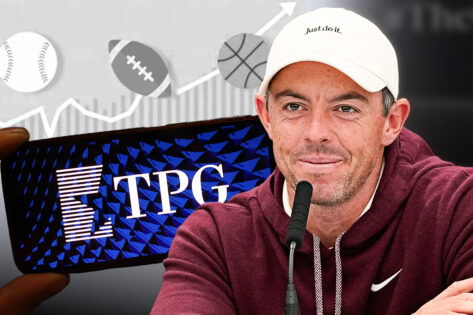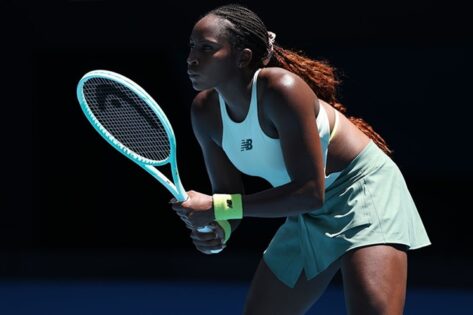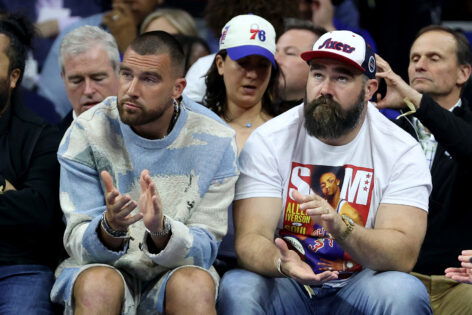Add another name to the growing list of sports investment groups. TPG, in partnership with golfer Rory McIlroy, who recently completed his career Grand Slam at the Masters, his business partner, Sean O’Flaherty, and their company, Symphony Ventures, has launched TPG Sports. The newly floated entity will focus on investing in businesses across different companies, teams, and leagues.
And it’s only par for the course.
Last year, JP Morgan built a dedicated sports investment banking team. That came after the financial giant’s active involvement in British billionaire Sir Jim Ratcliffe’s minority acquisition of Manchester United. And only last month, Standard Chartered launched a sports investment fund for its wealthy clients. It’s been a long time since sports have shattered the shackles of a ‘pastime’, and now it’s becoming a bustling domain for investors.
Why is sports investment becoming so important?
The valuation of elite sports enterprises has grown massively in recent years. According to CNBC’s estimate, the average NBA team is worth $4.66B (15% Y-O-Y), the average NFL team’s worth is $6.49B (11% Y-O-Y), and the average NHL team’s worth is $1.92B (37% Y-O-Y).
A study by KLUTCH Sports Group and RBC found that:
Historically, sports franchises have outperformed traditional asset classes like equity, fixed income, and commodities.
Sports franchises have shown resilience during volatile times and have weathered the storms steadily during times like COVID-19.
Minority stakeholders in sports franchises have increased courtesy of rising investment from private firms and institutions.
Minority acquisitions in sports franchises are a scarce asset. Which is what makes it even more lucrative. But with the North American leagues opening the doors for private equity firms to move in, it has become somewhat accessible for a private investment firm to become a stakeholder in an established franchise.
#NasdaqListed @tpg President Todd Sisitsky and @themasters Champion Rory McIlroy visited @Nasdaq MarketSite to announce their new venture, TPG Sports.
Nasdaq is pleased to be at the intersection of business and sports, supporting this innovative partnership with Symphony… pic.twitter.com/54d51dHojF
— Nasdaq Exchange (@NasdaqExchange) May 2, 2025
The Ross-Arctos Sports Franchise Index (RASFI), which tracks the Return on Investment (ROI) in sports investment, clearly shows the benefit that stakeholders have enjoyed:
Asset Class
Five Year
Ten Year
Twenty Year
Sports
14.4%
15.2%
12.3%
Global Equities
10.6%
9.8%
8.2%
US Equities
14.5%
13.1%
10.4%
Source: RBCWealthManagement
But it’s not just holding a share of a team, ancillary investments also offer investment firms a new revenue stream. Global growth in the sports industry, with rising sponsorships and mammoth media rights deals, has turned this sector into a centerpiece investment option for investors. That has inevitably led to newer players entering the arena.
Key players in the sports business market
A Deloitte study found that the demand for sports investment has grown massively in the last year. A noticeable trend has been the influx of European players in the industry. For example, the investment from the other side of the Pond has increased to 24% from 20% in 2023. However, it should be noted that the North American investors remain the leaders in this arena, accounting for 55% of all investment.
So, the current market trends demonstrate that the sports investment business is more geographically diverse. This widened landscape has offered stakeholders a larger arena, where the scope for fresh investment opportunities is greater. That, in turn, means that floodgates are open in previously untapped markets and the fertile grounds that other sports offer.
Sports that witnessed a rapid increase in investment
Take Soccer (Football) for example. Deloitte’s 2025 Sports Investment Outlook reveals that in 2024, Soccer accounted for nearly half of all transactions involving sports rights-holders. Notably, only 16% of those were spread across the big-five leagues in Europe: Premier League (England), Bundesliga (Germany), La Liga (Spain), Serie A (Italy), and Ligue 1 (France).
MLS Fanbase
CNBC reported that in 2025, the MLS sponsorship revenue will witness double-digit growth compared to last year.
60% of the MLS fanbase consists of Gen Z or millennials, and 35% are Hispanic– the ideal demographics for advertisers.
According to EDO, men’s professional soccer drives with 14% more ad effectiveness than the primetime average.
But it’s not just soccer that is the point of conversation in boardrooms. In fact, the niche arena of Motorsports accounted for 8% of all deals done in 2024. A year before, it contributed only 4%. Similarly, women’s sports, especially WNBA and NWSL, kept up with the trend of continued investment.
What does the future look like?
The trend is clear: investors are looking beyond the traditional sports like the NFL, NBA, and MLB. Sports like Pickleball, golf, and e-sports are gaining traction, attracting investors due to their scalable media opportunities and fresh sponsorship models that present high-reward possibilities with lower entry costs
And at the same time, increased demand reflects the increased competition as well. So, in 2025, the sports business groups will assess the ROI from early investment and allocate resources for the next phase.
The Deloitte study predicts a fork in the road: one path leads toward established sports, the other toward emerging markets with higher risk and reward. TPG’s recent move into this space signals the beginning of an era where sports investment is not just a trend — it’s a new frontier.
The post From McIlroy to Standard Chartered—Sports Investing Is the New Private Equity Frontier appeared first on EssentiallySports.



